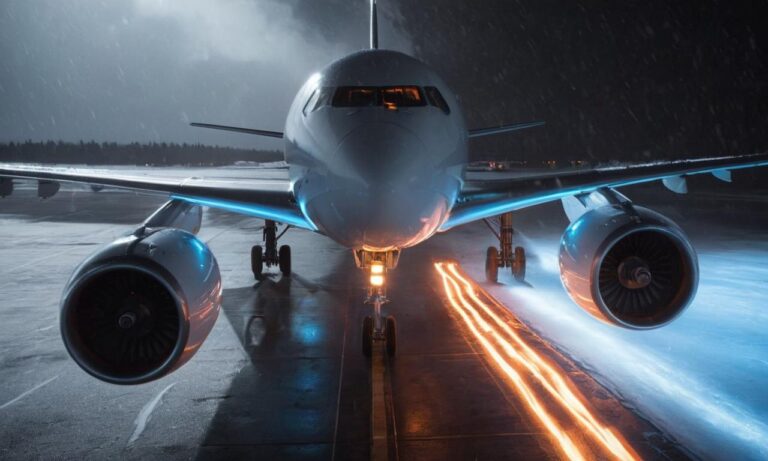When it comes to aviation, ensuring the safety of flights is paramount. One crucial aspect that demands meticulous attention is the development and implementation of robust ice and rain protection systems in aircraft.
The Importance of Ice and Rain Protection
Adverse weather conditions pose significant challenges to aviation, with ice and rain being particularly hazardous. The accumulation of ice on the surfaces of an aircraft can disrupt its aerodynamics and compromise its performance. Rain, on the other hand, can affect visibility and impact the overall safety of the flight. Recognizing these dangers, modern aircraft are equipped with sophisticated ice and rain protection systems.
Types of Ice and Rain Protection Systems
Several advanced technologies are employed to safeguard aircraft from the effects of ice and rain. These include:
- De-icing Systems: These systems utilize heat or chemicals to remove or prevent the formation of ice on critical surfaces such as wings, tail, and engine inlets.
- Anti-icing Systems: Designed to actively prevent ice formation by heating the surfaces susceptible to icing, anti-icing systems play a crucial role in maintaining safe flight operations.
- Hydrophobic Coatings: Some aircraft feature hydrophobic coatings on surfaces to repel water, minimizing the impact of rain and reducing the chances of ice formation.
Integration and Regulation
Ensuring the seamless integration of ice and rain protection systems is a complex task that involves meticulous engineering and adherence to stringent safety regulations. Aviation authorities worldwide set standards that must be met to guarantee the reliability and effectiveness of these systems.
Advancements in Technology
With technological advancements, the field of ice and rain protection in aviation continues to evolve. Smart sensors, improved materials, and more efficient heating elements contribute to enhanced performance and reliability, ultimately elevating the safety of air travel.
Challenges and Innovations
Despite the progress made in ice and rain protection systems, challenges persist. Engineers and researchers are continually innovating to address issues such as energy efficiency, weight considerations, and adaptability to various aircraft models and sizes.
Ice and rain protection systems in aircraft are indispensable for ensuring the safety and reliability of air travel. The continuous development of innovative technologies and rigorous adherence to safety standards contribute to making modern aviation increasingly resilient in the face of challenging weather conditions.
Frequently Asked Questions
As the topic of ice and rain protection systems in aircraft is vital to aviation safety, here are some frequently asked questions to provide further insights:
1. How do De-icing Systems Work?
De-icing systems employ various methods, including the application of heat or chemicals, to remove or prevent the formation of ice on critical surfaces such as wings, tail, and engine inlets. The goal is to ensure optimal aerodynamics and performance during flights.
2. What is the Role of Anti-icing Systems?
Anti-icing systems actively prevent the formation of ice by heating susceptible surfaces. This proactive approach is crucial in maintaining safe flight operations, especially when encountering adverse weather conditions that could lead to ice accumulation.
3. How do Hydrophobic Coatings Enhance Safety?
Hydrophobic coatings are applied to aircraft surfaces to repel water, minimizing the impact of rain and reducing the chances of ice formation. This innovative solution contributes to both safety and efficiency in challenging weather conditions.
4. What Standards Govern the Integration of Protection Systems?
Ensuring the seamless integration of ice and rain protection systems involves adherence to stringent safety regulations set by aviation authorities worldwide. These standards are designed to guarantee the reliability and effectiveness of these systems across different aircraft models and sizes.
5. What Technological Advancements Have Been Made?
Recent technological advancements in ice and rain protection include the integration of smart sensors, improved materials, and more efficient heating elements. These innovations contribute to enhanced performance and reliability, further elevating the safety of air travel.
6. What Challenges are Faced in the Field?
Despite progress, challenges persist in the field, such as addressing issues related to energy efficiency, weight considerations, and adapting protection systems to various aircraft models. Ongoing innovations by engineers and researchers aim to overcome these challenges and improve the overall effectiveness of these systems.
Exploring Future Trends
Looking ahead, the aviation industry is likely to witness continuous advancements in ice and rain protection systems. Future trends may include the development of even more efficient and environmentally friendly technologies, further ensuring the resilience of modern aviation in challenging weather conditions.






